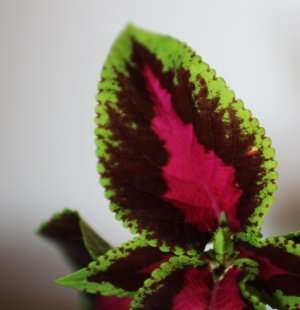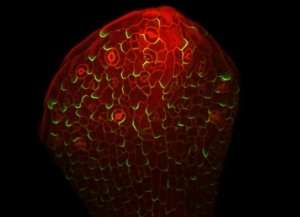Leaves possess a molecular compass

Leaves provide us with food, forest canopies and football fields. Every leaf grows from only a few cells.
But what guides these cells to become the leaf shapes we recognise in the natural world?
One idea is that the hundreds of cells in a leaf are coordinated. This can be likened to an internal molecular compass within each cell.
This compass gives the cell directionality and may be coordinated, not by a magnetic field, but by a biochemical field across the leaf. This molecular compass, referred to as a polarity field, may allow cells to coordinate growth to form the final shapes of leaves.
Coordination across a leaf had previously been predicted by computer modelling but experimental evidence for the cells' internal compass was lacking.
Professor Enrico Coen's lab wanted to test whether there was any evidence for a coordinated polarity field in the cells of a leaf.
The team used the model plant Arabidopsis thaliana to provide evidence for cells being coordinated across a leaf for the first time.
They used a protein called BASL to reveal the internal compass within cells and found that this protein was always localised to the end of the cell closest to the leaf base.

"Using this protein to detect the polarity field is like switching a light on in each cell across the tissue. It allows us to see that these cells all have a compass, pointing in the same direction across the leaf" explains Catherine Mansfield, the lead author of the study.
"The surprising thing we found is how remarkably similar the biological data is, compared to what was predicted by computer modelling years ago… It's exciting that we've found that cells are coordinated across a whole leaf. We don't know how it works but it indicates a deeper cellular mechanism for guiding growth."
"We have also provided plant biology community with a tool which they can use in different species: such as crops and other species to allow an understanding of how plant shapes grow and develop. In this way we will find out if, as we suspect, this molecular compass is a conserved mechanism in the development of plant shapes across the plant kingdom which could be co-opted in different ways by different branches of evolution."
More information: Catherine Mansfield et al. Ectopic BASL Reveals Tissue Cell Polarity throughout Leaf Development in Arabidopsis thaliana, Current Biology (2018). DOI: 10.1016/j.cub.2018.06.019
Journal information: Current Biology
Provided by John Innes Centre



















